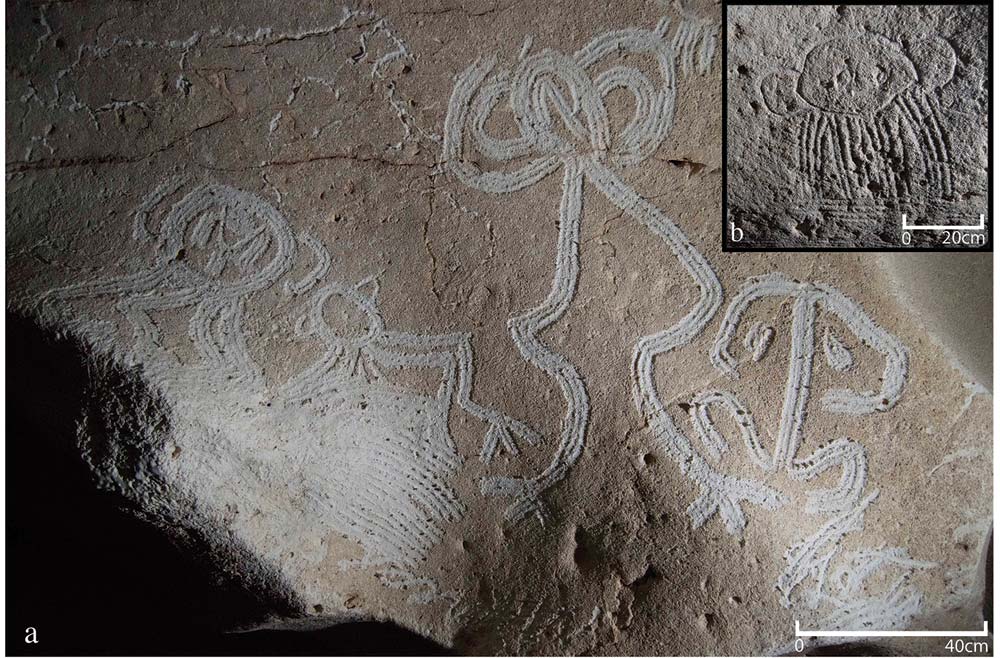Caribbean Cave Art Illuminates Encounters with Europeans

Puerto Rico's Mona Island is famous for its vast network of caves. In these dark underground chambers, archaeologists have discovered engravings by indigenous people and early European colonizers alike.
These cave markings may offer a rare glimpse at individual, perhaps even spiritual, first encounters that took place in the Caribbean nearly 500 years ago between indigenous and European people, according to a new study.
Led by Jago Cooper, of the British Museum in London, and Alice Samson, of the University of Leicester, a group of researchers spent years documenting the subterranean artwork at Mona Island —which is about halfway between the main island of Puerto Rico and Hispaniola. The small island has been occupied by humans for at least 5,000 years, and Christopher Columbus stopped there during his second voyage in 1494.[See Images of the Cave Art on Mona Island]
The team found archaeological evidence for pre-Columbian indigenous presence in 30 of the 70 cave systems they surveyed. They recorded thousands of indigenous carvings depicting geometric shapes, as well as animal-like creatures and ancestral beings, covering the walls and ceilings of the caves.
These drawings, some dating back to the 14th century, were created by a technique known as finger fluting,in which the artist drags one to four fingers or tools across the soft limestone cave surfaces.
One cave on the southern coast of the island stood out. Alongside the indigenous artwork, there are names, dates and Christian symbols like crosses and Christograms (a symbol of Christ usually consisting of letters) from the 16th century. There are also some Christian phrases and Bible verses, in Spanish and Latin, such as "dios te perdone" ("may God forgive you") and "verbum caro factum est" ("and the Word was made flesh").
In one case, a name scribbled graffiti-style on a cave wall could be tied to a real person, Francisco Alegre, who came to the Caribbean from Spain with his father in the 1530s and became a royal official in Puerto Rico.
Sign up for the Live Science daily newsletter now
Get the world’s most fascinating discoveries delivered straight to your inbox.
Since this cave would have been hard to access (today, it can be reached by climbing a steep cliff face and squeezing through a "human-sized entrance," as the researchers explained), it suggests Europeans could have gotten there only with the help of indigenous people.
It's possible that indigenous people who converted to Christianity crafted some of the finger-drawn crosses in the cave. Or some of the carvings might even represent a personal spiritual questioning by Europeans, perhaps moved by the sight of cave art flickering in the torchlight. The phrase"Plura fecit deus" ("God made many things") scrawled in one of the caves could "express the theological crisis of the New World discovery," the researchers said.
Their findings were published today (July 19) in the journal Antiquity.
Original article on Live Science.











